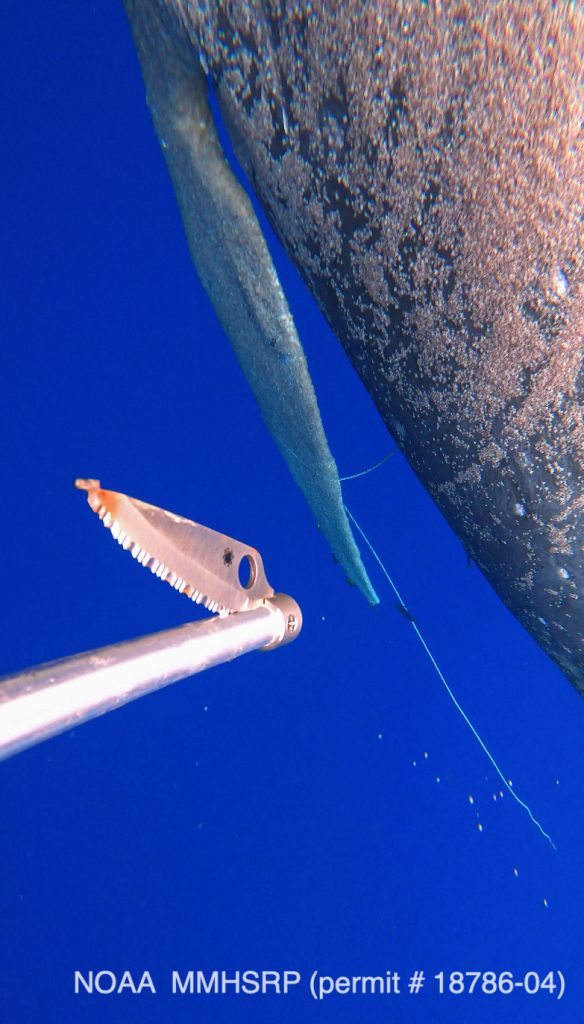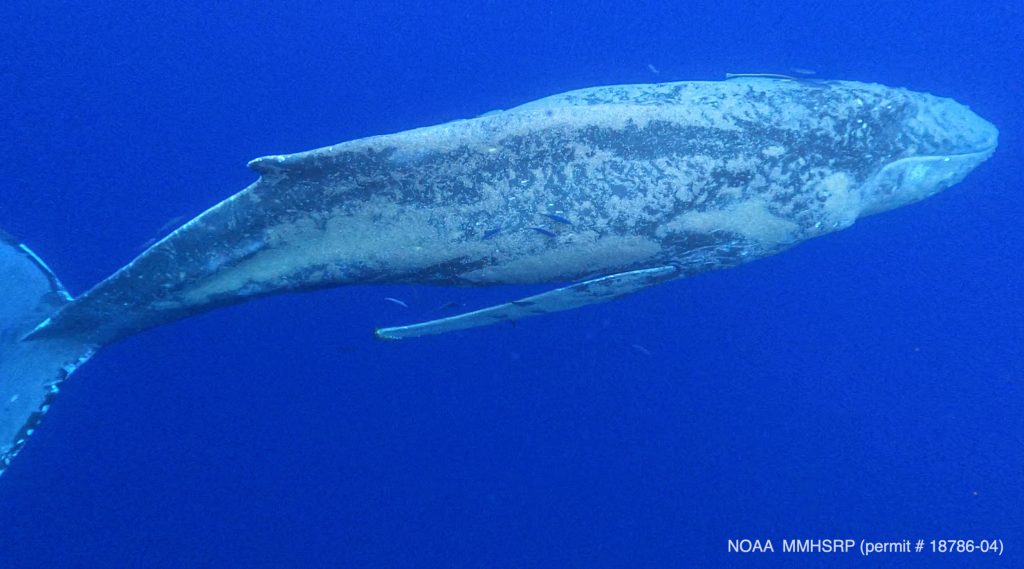Entangled Humpback Whale Freed of Gear off Lahaina, Maui
An entangled subadult humpback whale was freed of gear by a team of trained responders off Lahaina, Maui on Tuesday, March 9, 2021.
The animal was entangled in small gauge line through its mouth and around its left pectoral flipper, which trailed as a pair of lines approximately 50 feet behind the whale.
A team of responders made several cuts, removing most of the line; however, a small amount of gear could not be pulled from the whale’s mouth and remains on the whale.
The recovered gear will be analyzed towards determining its possible origins and trying to reduce entanglement threat in the future.

The response, coordinated by NOAA Hawaiian Islands Humpback Whale National Marine Sanctuary working with and under the authorization of NOAA Fisheries Marine Mammal Health and Stranding Response Program (Permit No. 18786-05) included personnel from the sanctuary, Cardinal Point Captains, Ultimate Whale Watch under the West Maui Rapid Response team, Keiki Koholā Project, and others.
Responders say the removal of most of the gear “greatly increased the animal’s chances of survival.”

The whale entanglement was first reported at 12:39 p.m. by the tour vessels Teralani and Wahine Hana, who were helping the sanctuary look for a separated humpback whale calf that was reported by another tour vessel, Gemini. The Ultimate Whale Watch tour vessel, Wahine Hana, was able to monitor the entangled whale from a safe and legal distance and help as a first responder, until the sanctuary research and response vessel, Koholā, which was conducting research transects nearby, could get on scene.
“Reporting and first response are valuable roles towards the success of helping the animals and keeping people safe,” leaders said. The Koholā was joined by the Keiki Koholā Project research vessel, and together they both monitored and provided initial assessment.
As resources and conditions allowed, an authorized, highly experienced response team got underway onboard Ultimate Whale Watch’s dedicated research and response vessel, Aloha Kai.

The team made several approaches to the animal from the Aloha Kai, with the Koholā and Keiki Koholā Project vessels acting as safety support. The first approach determined whether the gear could be pulled from the animal’s mouth.
“Unfortunately, the team was not able to remove the line that had become embedded at the back of the mouth but were able to remove approximately 30 feet of the trailing line,” officials said.
On the second approach, the team was able to remove another approximately 90 feet of line, including the multiple wraps around the left pectoral flipper. Attempts were made to remove what little gear remained, but the animal became uncooperative, which presented a higher risk to safety, and the decision was made to stand down.
Less than 35 feet of gear is believed to remain on the animal with all the wraps from the left pectoral flipper being removed, no potential for wraps to the tail, and little drag remaining.
“While we have no way of knowing whether the animal will survive, its chances have been significantly improved,” team leaders said.

Using similarities in the entanglement and the animal’s unique fluke ID, it has been determined that the entangled animal is the same as was reported nearly a month earlier off the Kīhei boat ramp. Unfortunately, the sanctuary and its partners did not receive reports immediately, and while a search was conducted days after the report, the animal was not relocated at that time.
Mariners are asked to keep a sharp lookout for whales in distress, but not to approach closely or attempt to assist them. Only trained and well-equipped responders that are authorized under a permit issued to NOAA Fisheries Marine Mammal Health and Stranding Response Program are permitted to assist whales and other marine mammals. “Immediately reporting an entangled or otherwise injured or distressed whale, is the best way to help the animal,” according to team leaders.

If you sight any marine mammal in distress, do not enter the water or try to disentangle the whale yourself. Maintain 100 yards distance and please call the NOAA 24/7 Marine Wildlife Hotline at 1-888 256-9840. If unable to call, please radio the U.S. Coast Guard on VHF CH. 16 and they will relay the report.
It is illegal to approach a humpback whale closer than 100 yards by any means by sea and 1,000 feet by aircraft or drone.



























